Eight African Belt And Road Initiative Projects That Global Investors Should Be Aware Of
Op/Ed by Chris Devonshire-Ellis
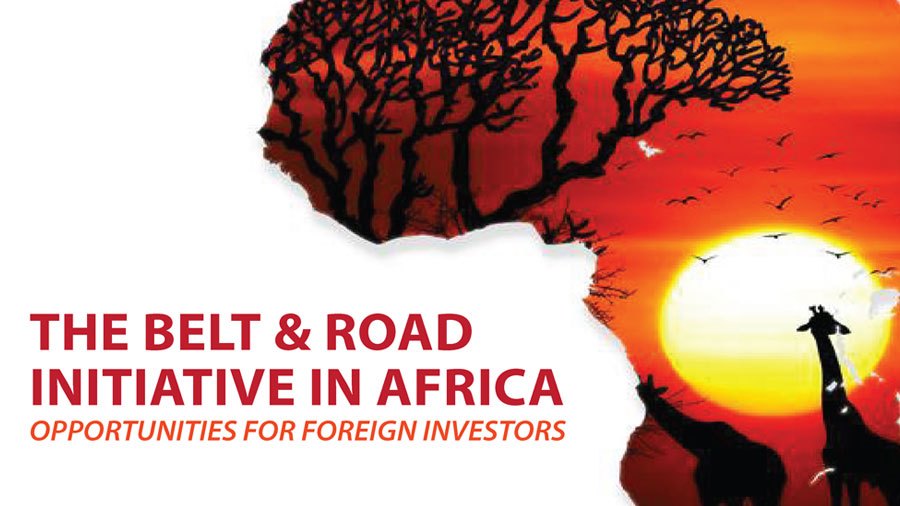 China’s official Belt and Road website lists 42 African countries who have signed MoU with the Belt & Road Initiative. Africa is considered a key part of China’s infrastructure build efforts, due to its potential for rail, roads, and energy. Many African countries are also in need of better infrastructure, which is still seen as a major barrier to development in the region.
China’s official Belt and Road website lists 42 African countries who have signed MoU with the Belt & Road Initiative. Africa is considered a key part of China’s infrastructure build efforts, due to its potential for rail, roads, and energy. Many African countries are also in need of better infrastructure, which is still seen as a major barrier to development in the region.
In 2018, only 40 percent of Africans had access to electricity, 33 percent had access to paved roads, and 5 percent of agricultural land was irrigated. China meanwhile has begun many of its investment activities in the East Africa region, given its access to ports and need for rails and roads, but initiatives have since branched out to numerous projects across the continent.
These Belt and Road projects in Africa mainly focus on transport and power but also include international rail and expressways, seaports, hydropower and carbon-based power, water supply and sanitation, and many other development programmes that both help satisfy African needs as well as paving the way for additional developments later on.
China’s investments in Africa have risen significantly since the concept of the BRI was launched, with total spending from the Chinese government and Chinese SOE’s estimated to be about US200 billion. Beijing is now the largest funder of infrastructure projects in Africa, financially backing around a fifth of all projects and constructing a third of them. A McKinsey & Company report estimates that more than 10,000 Chinese-owned firms operate in Africa, with about 90 percent privately owned. Numerous studies have shown that Chinese investment has had a positive effect on Africa, though growing debt has led to some states slightly pulling back on their plans, a situation enhanced by the Covid-19 pandemic and leading to some projects being put on hold. However there are a whole raft of projects coming to completion and in this article I identify just a few of them. These should be of interest to regional and foreign investors as when this infrastructure build starts to come online, new investment opportunities to exploit these builds start to arrive.
Algeria: The Cherchell Ring Expressway & Port: Linking The Mediterranean With The African Interior
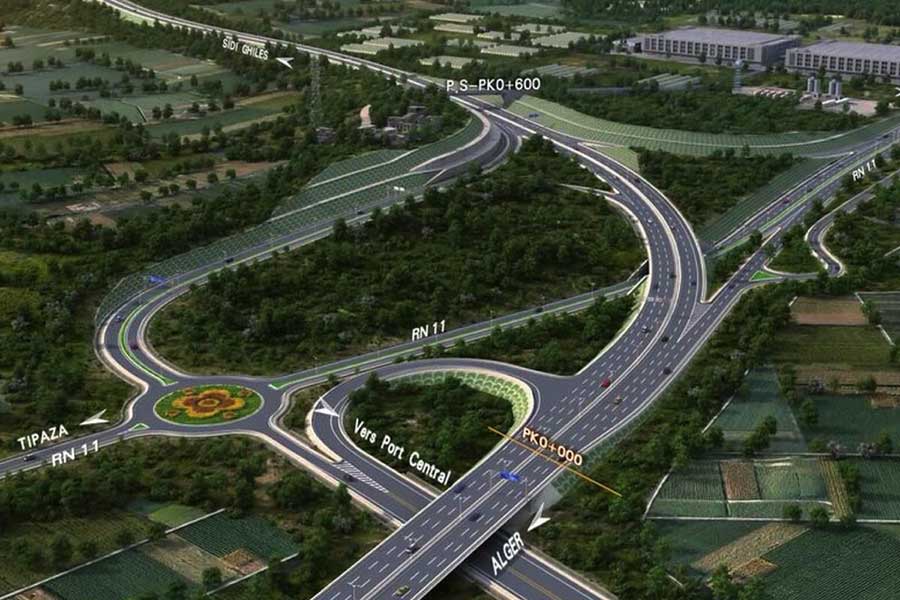
The Chechell Beltway Project is an often overlooked, part Chinese funded project, being an extension of the Bou-Ismail-Cherchell 48km Expressway with a main line about 18.3 kilometres. The starting point is the intersection of the National Highway 11 in the east of Chechell with the 48km expressway, the ending point is Sidi Ghiles town. The project is in the mountains area just outside Chechell city center, and is distinguished by large earthworks, embankments, and viaducts. Steep and complicated terrain have bought many challenges to the construction, however its principal engineering length is over 20km, including pavements and a 3.2km viaduct. Although a small construction in itself, it strategically connects Algeria with Niger, Nigeria and Chad, thereby accessing a combined market of 275 million people, and these landlocked markets to Algerian sea ports. It is this attention to detail that China is able to bring to coordinating African infrastructure and leading to future consumer market development.
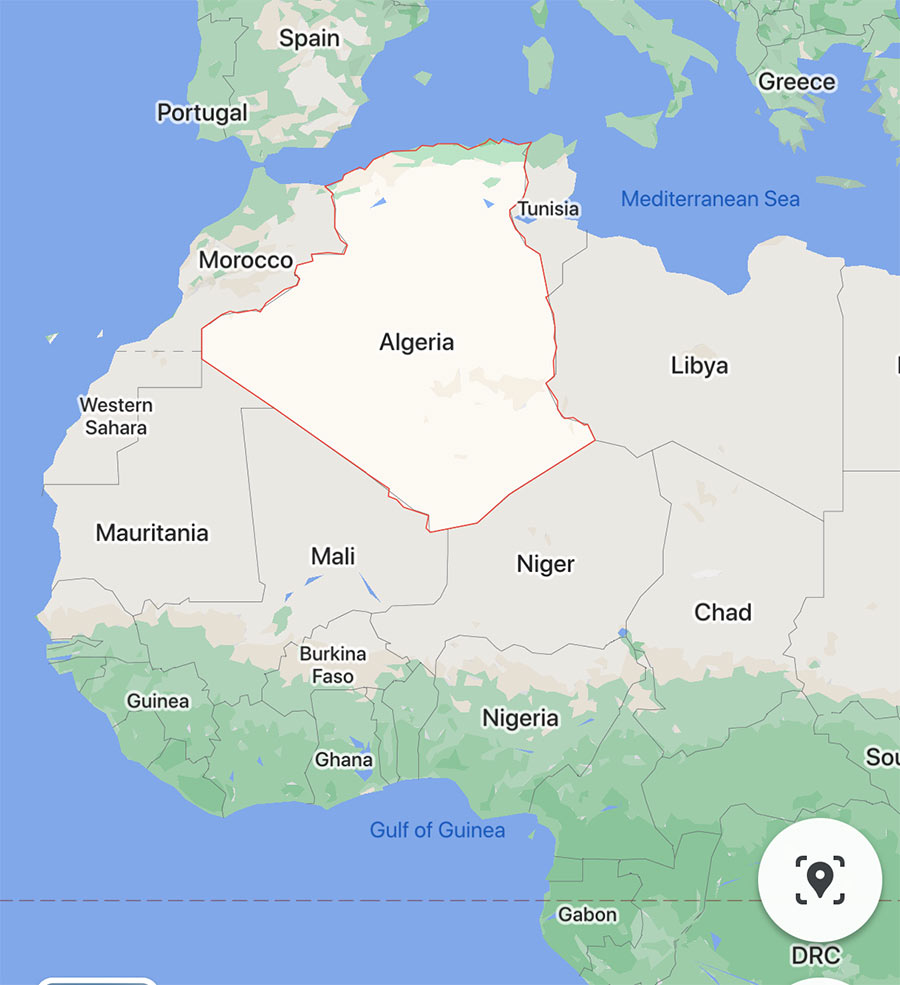
Such cross-border access is important as the African Continental Free Trade Agreement is coming into effect that reduces cross-border tariffs to zero on 95% of all traded commodities, an agreement that Beijing helped broker. China’s tying together trade agreements with infrastructure is a key, deliberately co-ordinated aspect of BRI development.
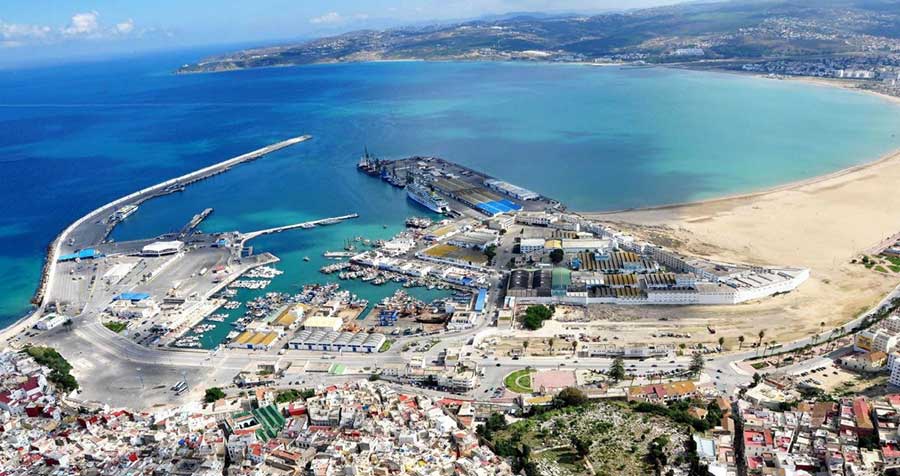
The El Hamdania Port
This attention to interconnectivity detail is further illustrated by China’s involvement in the huge, US$3.3 billion redevelopment of Chechell, or El Hamdania Port, which is 88km west of Algiers. The Port will have 23 docks capable of processing 6.5 million 20-foot containers and 26 million tonnes of goods per year, while forecasts by Algeria’s Transport Ministry suggest that port traffic in the country’s central region is expected to hit 35 million tonnes per annum by 2050. The Chechell project is expected to be fully completed by 2024, and will be managed by China’s Shanghai Ports Group. This will provide increased import-export potential from North and parts of Central Africa to Europe as well as to China, the Middle-East and South-East Asia. It will also in time spur a relocation of South-East and China export manufacturing facilities to Africa as production costs inevitably increase in Asia and productivity levels improve in Africa.
Ethiopia: The Addis-Ababa to Djibouti Railway
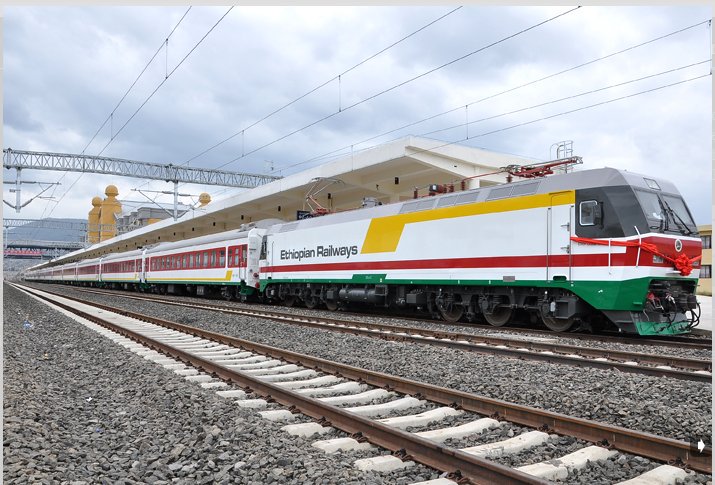
The Addis Ababa–Djibouti Railway is a new standard gauge international railway that serves as the backbone of the new Ethiopian National Railway Network. It was inaugurated on January 1, 2018. It provides landlocked Ethiopia, a country of 110 million, with access to the sea, linking the capital Addis Ababa with Djibouti and the Port of Doraleh (see subheading further below) More than 95% of Ethiopia’s trade passes through Djibouti, accounting for 70% of the activity at the Port.
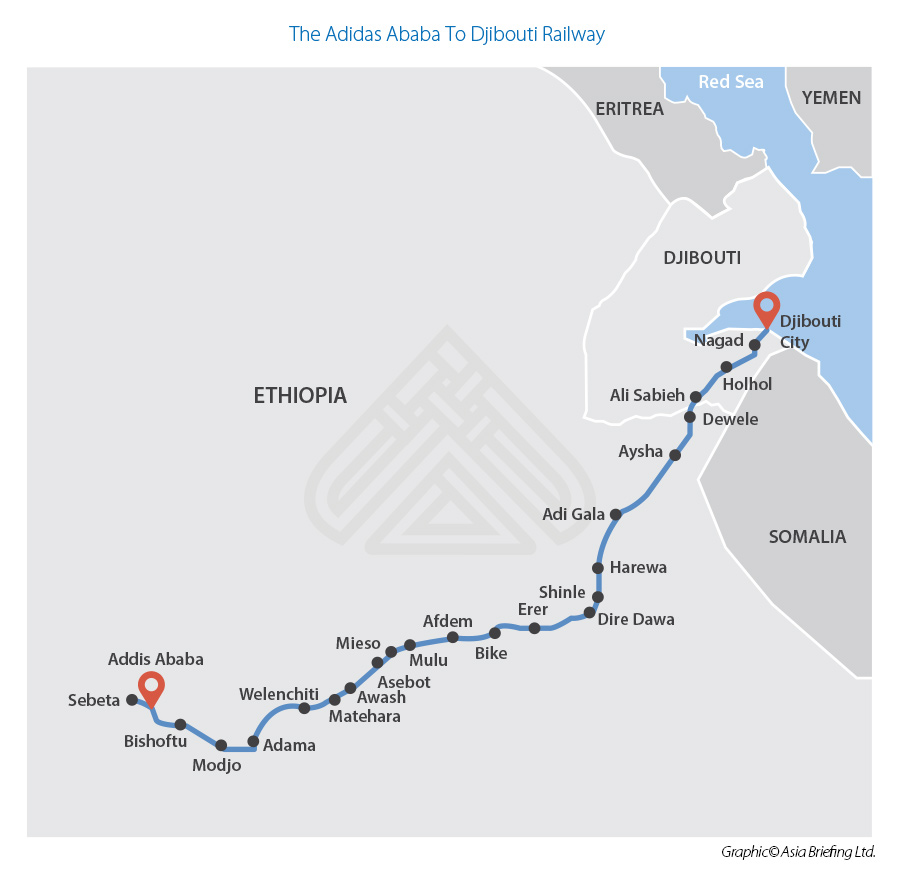
The total railway capacity is 24.9 million tonnes of freight annually, with 6 million tonnes annually expected in 2023. These plans are accompanied by construction works at the Port of Doraleh to expand the annual cargo handling capacity from 6 to 14 million tonnes, with the aim of reaching 10 million tonnes of cargo by 2022.
In 2019 the railway transported 84,073 passengers and generated US$1.2 million in revenue from that service, less than in 2018. In 2019 the railway generated US$40 million in both passenger and cargo revenue, below the operating cost of US$70 million. Covid has impinged upon the rail usage for the time being however the infrastructure is there and will prove viable.
Djibouti: Port of Doraleh – Ethiopia’s Gateway To World Trade
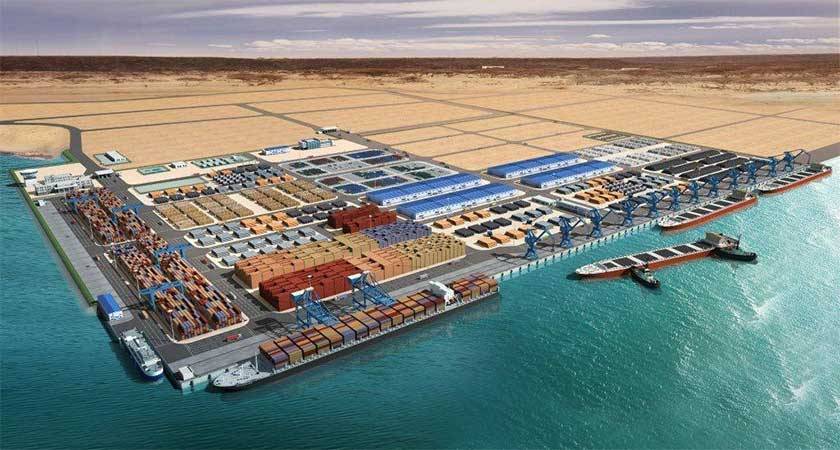
The Port of Doraleh is an extension of the Port of Djibouti, 5 km west of Djibouti City. The multipurpose port has terminals for handling oil, bulk cargo, and containers. It is partially owned and operated by the Djibouti Government and China Merchants. There is a Chinese naval base under construction directly adjacent to the port, which has given rise to concerns about China militarizing Belt & Road facilities. However it should also be noticed that the Port is close to Somalia, well known for maritime terrorist and piratical problems; a Chinese military presence is not unreasonable when taking into account shipping protection.
The Port is important as it offers, via additionally Chinese-built infrastructure, sea access to and from Ethiopia, one of Africa’s fastest growing economies and the continent’s second most populous country after Nigeria. Opening Ethiopia up to trade is an important part of China’s African strategy and the Port of Doraleh will provide exactly this. Additional wealth creation may also, in time, help settle the insurgency in next door Somalia as young men realize a better quality of life exists in commerce as opposed to fundamentalism.
The East Africa Rail Corridors
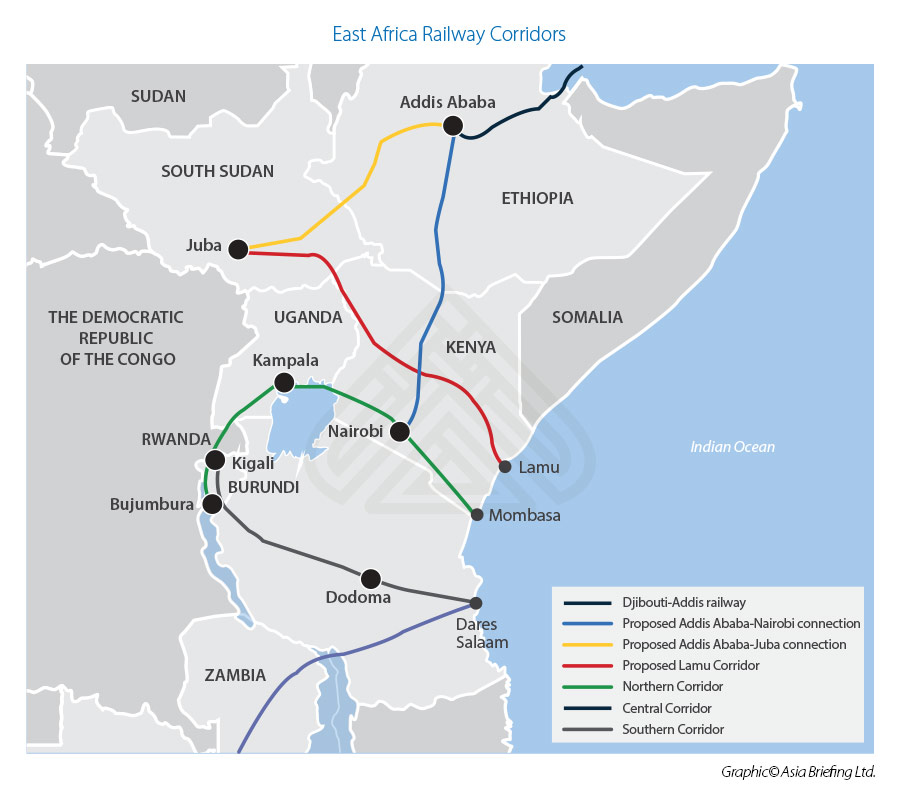
The East African Railway Master Plan is a proposal for rejuvenating the railways serving Tanzania, Kenya and Uganda and adding railways to serve Rwanda and Burundi. The objective is to further the economic development of eastern Africa by increasing the efficiency and speed, and lowering the cost, of transporting cargo between major ports on the Indian Ocean coast and the interior.
All new railways will be Chinese standard gauge while existing narrow gage railways will be rehabilitated. The plan aims for interoperability within the resulting hybrid railway network. A later step would expand the eastern Africa railway network to South Sudan, Ethiopia and the Democratic Republic of the Congo. The plan is managed by infrastructure ministers from participating East African Community countries in association with Canadian transport consultation firm CPCS Transcom who are almost certainly North America’s closest thing to a Belt and Road Initiative infrastructure developer. Chinese SOEs are taking part in several of the projects, both in terms of engineering and equipment provision.
The Northern Corridor is a busy and an important transport route to the East and Central Africa countries of Burundi, Eastern DR Congo, Kenya, Rwanda, South Sudan and Uganda. The main Northern Corridor transport network is connected to Mombassa and includes a road network; railways belonging to Kenya and Uganda Railways, rail-lake transport; inland water routes; Inland Container Depots, the Tororo Inland Port, and an oil pipeline.
The Central Corridor serves the landlocked Great Lakes Region of Tanzania and links through to Dar es Salaam.These corridors are built to Chinese Class 1 standard rail gauge. Other corridors are on the drawing board and being discussed. Collectively these will interconnect Africa as never before and help open up the African continental market to global trade and commerce.
Kenya: The Mombassa-Nairobi Railway – Connecting Capitals To Ports
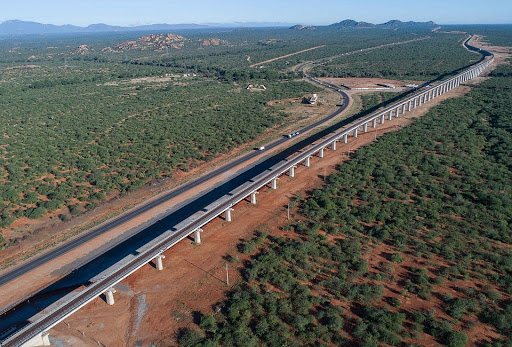
The Mombasa–Nairobi Standard Gauge Railway in Kenya connects the major Indian Ocean port city of Mombassa with Nairobi, the country’s capital and largest city. The East Africa Railway Master Plan provides for the Mombasa–Nairobi Standard Gauge Rail (SGR) to link with other SGRs being built in the region.
At a cost of US$3.6 billion, the SGR is Kenya’s most expensive infrastructure project. The prime contractor was the China Road and Bridge Corporation (CRBC), which hired 25,000 Kenyans to work on the railway. CRBC’s holding company, while China Communications Construction Company (CCCC) is contracted to operate the line for its first 5 years. After concerns from environmentalists, the route was partially constructed on pillars to allow the passage of migrating wildlife such as elephant.
An extension from Nairobi to Naivasha, Kenya’s huge lake, famous for its Flamingo’s and a major tourist attraction was completed in October 2019 making the line’s initial reach some 579km. Commercial freight services began on 1 January 2018. Passenger uptake has exceeded expectations, with the train carrying 2 million passengers in the first 17 months of operation. By 2019, the SGR was operating 30 freight trains and 4 passenger trains per day.
Mozambique: The Maputo-Katembe Bridge – Africa’s Longest Suspension Bridge
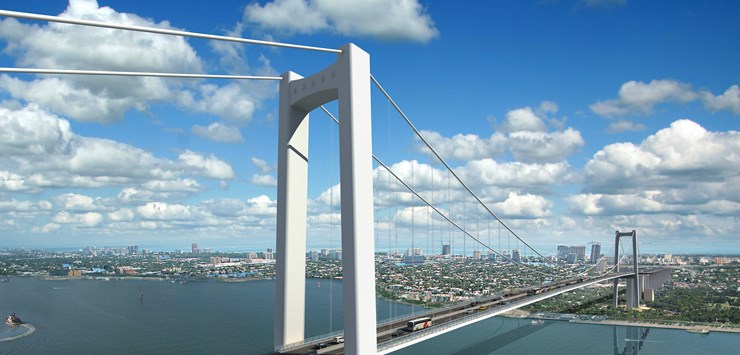
The Maputo–Katembe bridge (Ponte de Maputo a Katembe) is a suspension bridge across Maputo Bay in southern Mozambique. The bridge connects the Mozambican capital Maputo on the northern bank, with the suburb of Katembe on the southern bank. Construction work began in 2014 and the bridge officially opened November 10, 2018. The construction work was carried out by the China Road and Bridge Corporation, a large part of the project was financed by loans from the Chinese Exim Bank.
The bridge is the longest suspension bridge on the African continent at 3041 metres. The four-lane bridge crosses the bay at a height of 60 metres. It is directly connected to the road to Ponta do Ouro, an important fishing and tourism destination.
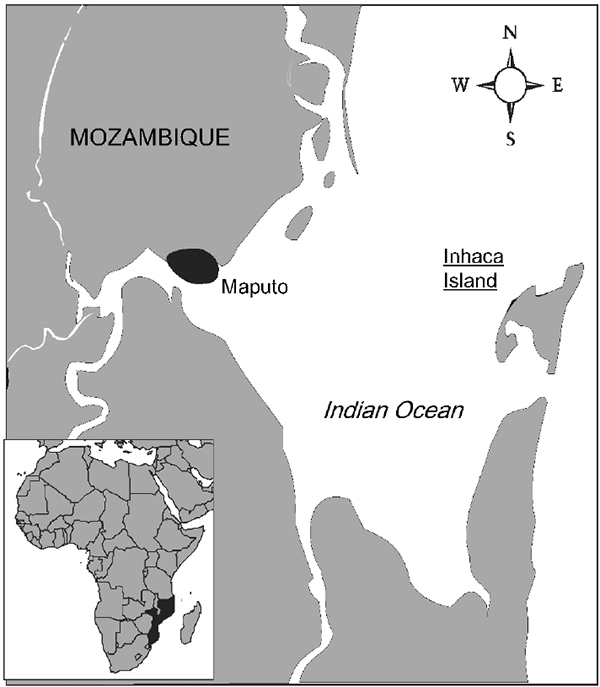
The bridge is having a profound impact on the 2.5 million people in the immediate vicinity.
Maputo, especially the city centre, is heavily urbanised and has two million inhabitants on the north bank of the city, while in Katembe most of the buildings are one-storeyed, the roads are unpaved and there is huge potential for development. An estimated 20,000 people currently live in Katembe. With the completion of the bridge and the extension of the road to Ponta do Ouro, a massive population growth of up to 400,000 inhabitants is forecasted for Katembe. The entire southern shore is also to be urbanised. According to the strategic plan for the urbanization of Katembe, approximately 9.5 sqare km (60 % of the total area) are to be reserved for residential buildings, 3.3 square km (20% of the total area) are earmarked for the service sector, and 2 square km (12%) for industry. Obvious property development, investment, tourism and community services facilities are ripe for local and other businesses to construct here.
The extension of the road to Ponta do Ouro and Kwa-Zulu Natal (South Africa) is intended to massively shorten the travel time. A joint tourism plan with the South African province of Kwa-Zulu Natal and the Kingdom of Swaziland aims to attract more visitors to southern Mozambique.
Nigeria: The Lagos-Kano Railway
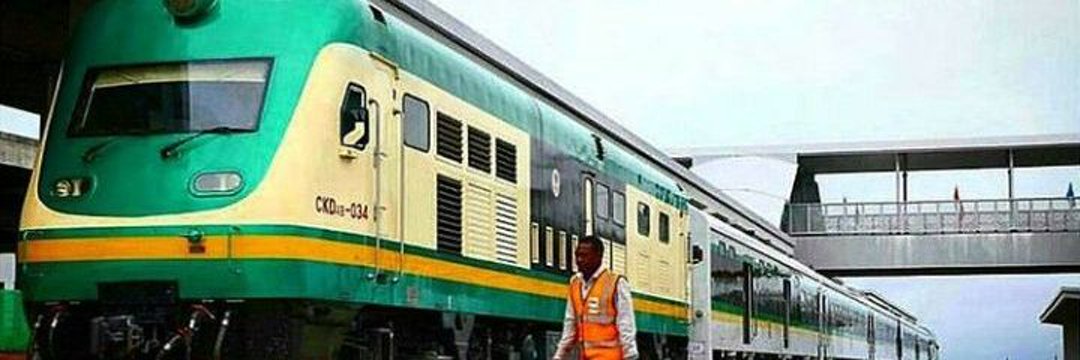
The Lagos–Kano Standard Gauge Railway is currently under construction and will reach across Nigeria, from the Atlantic Ocean port of Lagos to Kano, near the Niger border.
The railway is being built in segments. Only the segment between Abuja and Kaduna has been completed so far, and services began officially in July 2016. The segment between Lagos and Ibadan is scheduled to begin operations in mid 2021.
In 2006, the Nigerian government awarded a $8.3 billion contract to the China Civil Engineering Construction Company (CCECC) to construct a standard gauge railway from Lagos to Kano. Due to an inability to secure funding for the whole project, the Nigerian government decided to build the standard gauge line in segments and rehabilitate the narrow-gauge line in the meantime.
Abuja–Kaduna: Reconnecting the Capital city
The 187 km segment from Abuja to Kaduna was the first to be built. Abuja was not on the national rail network despite it being Nigeria’s capital city, while Kaduna is an important junction point on the existing Cape gauge railway network, where a branch line departs the Lagos–Nguru line for Kafanchan, on the Port Harcourt–Maiduguri Railway. The construction of the Abuja–Kaduna segment cost US$876 million, consisting of US$500 million in loans from China’s Exim Bank and the balance coming from the Nigerian government.
CCECC began construction of the railway on 20 February 2011, and it began laying track in 2013. It was officially inaugurated in mid 2016.
Lagos–Ibadan: connecting 30 million people
A US$1.53 billion contract was awarded in 2012 again to CCECC for construction of the Lagos–Ibadan segment (156 km) of the standard gauge railway by 2016. Ibadan is Nigeria’s third largest city after Lagos and Kano, while Lagos is the de facto financial centre of Africa and its largest port. The section is expected to be completed by mid 2021.
Itakpe-Warri – steel and ports
There have been difficulties linking the iron ore mines at Itakpe with the Ajaokuta Steel Mills and onwards to the port city of Warri. However, in October 2019, the Nigerian government signed a US$3.9 billion contract with CCECCto extend the railway from Warri to Abuja, connecting it to the Lagos–Kanos Standard Gauge Railway.
Other segments: connecting provincial capitals
In May 2018, the Nigerian Minister of Transportation signed a further US$6.68 billion contract with CCECC to complete the remaining segments of the Lagos–Kano Standard Gauge Railway, which will unite and connect Nigeria’s provincial capital cities by rail for the first time. Construction is expected to take until 2025.
- Ibadan-Osogbo-Ilorin (200 km)
- Osogbo–Ado Ekiti
- Ilorin-Minna (270 km)
- Minna–Abuja
- Kaduna-Kano (305 km)
Uganda: The Entebbe-Kampala Expressway

The Entebbe–Kampala Expressway is a four-lane toll highway in the Central Region of Uganda. The highway links Entebbe International Airport, the country’s largest civilian airport, to Kampala, the country’s capital and largest metropolitan area.
The highway starts at Entebbe International Airport and continues to Mpala, passes through Akright City, Kajjansi, Kabojja and ends at Busega, where it joins the Kampala Northern Express Highway. A spur branches off the highway at Kajjansi to connect to Munyonyo, located on the northern shores of Lake Victoria. The entire highway is a four-lane, dual carriage expressway, with toll access. Like the Nairobi-Mobassa rail, the route was partially constructed on pillars to allow the passage of migrating wildlife.
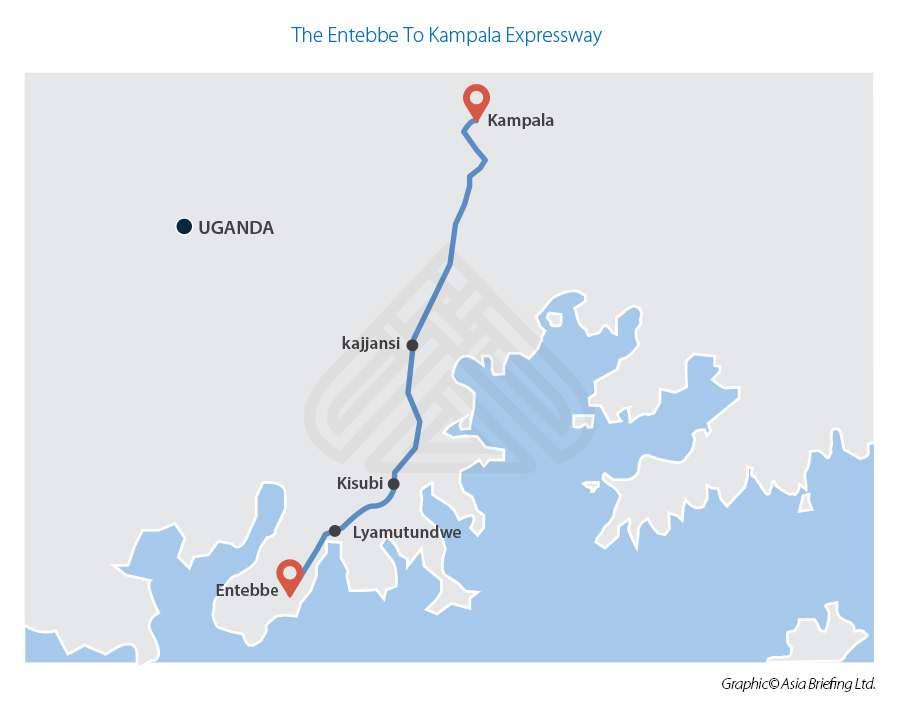
The Kampala Entebbe Expressway was constructed with the overall strategy of decongesting the Greater Kampala Metropolitan area. It is the first toll road in Uganda and it provides an alternative to the free existing Kampala-Entebbe road, which is narrow, congested, and unable to handle heavy traffic. Nigeria signed an agreement with the Chinese Exim Bank to provide finance for US$350 million for the construction of the route, repayable over forty years. The contract was awarded to CCECC. It was completed in late 2019.
The African Belt & Road: The Opportunity To Exploit The Infrastructure
These projects are just a handful of some of the infrastructure development that is taking place throughout the African continent. These provide significant investment opportunities as trade throughout Africa, including the development of a pan African middle class consumer base, accessible via sea, rail and road is beginning to arrive and starting to develop. These provide continental, national and regional opportunities for businesses involved in logistics, warehousing, packing and distribution together with all the human and ancillary business services needed to support these.
Both China, and to some extent Russia have already been doing this, developing Investment funds, Free Trade and Special Economic Zones to take advantage of the improving infrastructure, lower worker cost base and improving productivity. In time, cheap Asian based manufacturing will relocate to Africa.
African Free Trade

Taking advantage of where these regional hubs intersect in Africa with rail, road and ports is a smart move. Getting involved in the African Belt and Road Initiative isn’t an issue to do with partnering with China. It is an issue of providing support services to exploit the infrastructure and the growing demand and trade that is developing along these routes. This opportunity is being further enhanced with the African Continental Free Trade Agreement (AfCFTA).
AfCFTA is a free trade area which, as of 2018, includes 28 countries and was created by the African Continental Free Trade Agreement among 54 of the 55 African Union nations. The free trade area is the largest in the world in terms of the number of participating countries since the formation of the World Trade Organisation. It was brokered with significant encouragement from Beijing. The AfCTFA covers an area worth over US$3 trillion in GDP and eliminates tariffs on 90 percent of goods traded across the continent. Over 1.2 billion African consumers will be impacted by the agreement. AfCFTA is expected to be completed in terms of all nations ratifying the agreement sometime in 2021. When this happens, the subsequent sweeping away of intra-African cross-border tariffs will have a huge impact on African trade and its collective ability to internally source commodities and products, and to process, manufacture and export worldwide on an unprecedented scale.
To obtain a complimentary subscription to Silk Road Briefing please click here. For market research services concerning African supply chain routes and hubs along the Belt & Road Initiative please click here.
Related Reading
- How Foreign Investors Can Benefit From China’s Belt And Road Initiative In Africa
- Africa Needs China’s Belt & Road Initiative To Assist With Growth & Trade Potential
- Intra-African Free Trade Agreement Delayed Over Arabic Union & Covid Issues
About Us
Silk Road Briefing is written and produced by Dezan Shira & Associates. The firm provides foreign investment advice across Asia and has 28 offices throughout the region. It is heavily involved in Belt & Road Initiative advisory. In Africa the firm is represented by a network of 24 African firms as part of our membership of the Leading Edge Alliance. For advisory services please contact us at silkroad@dezshira.com






